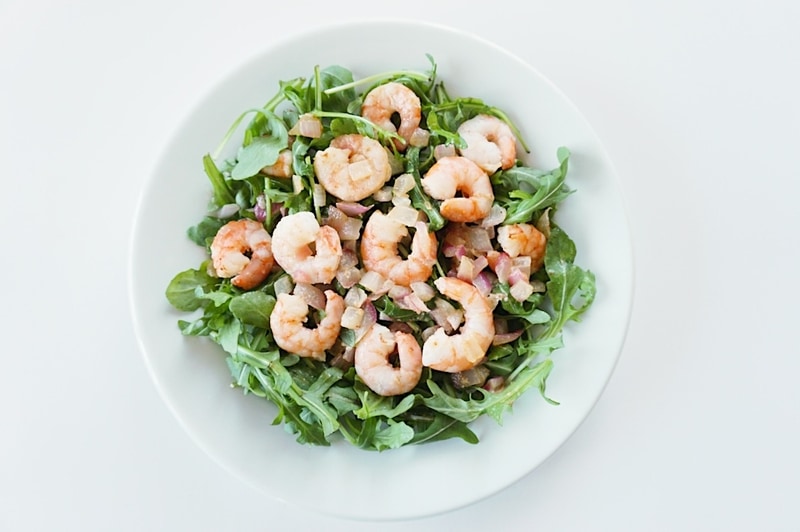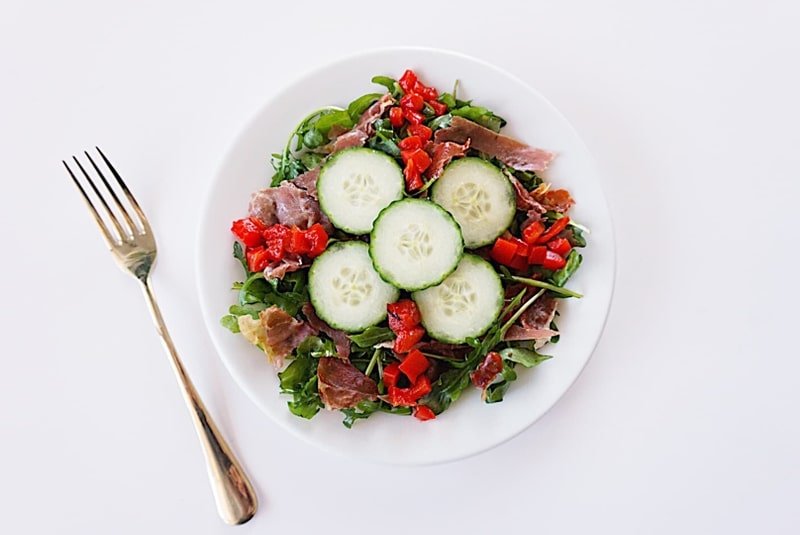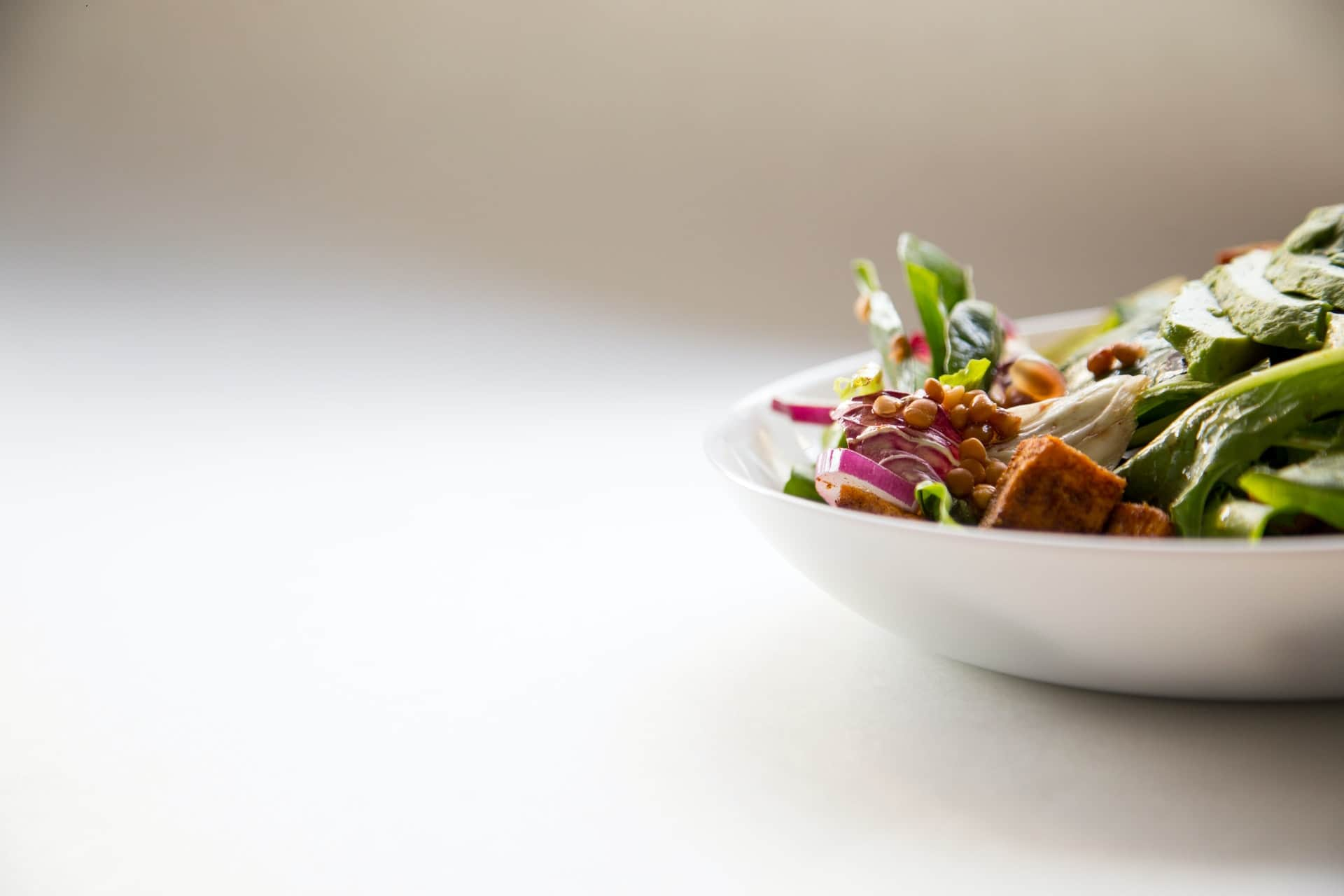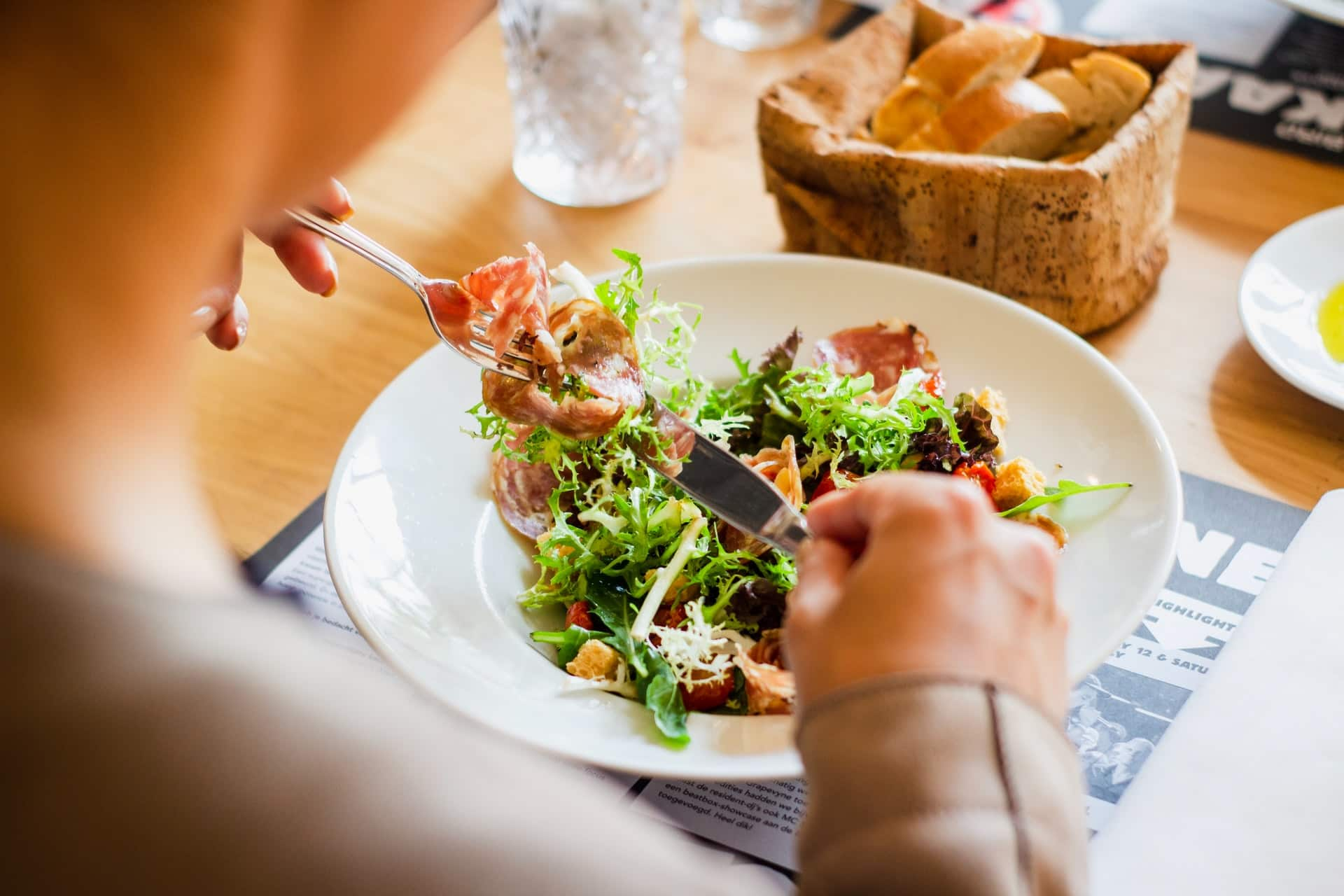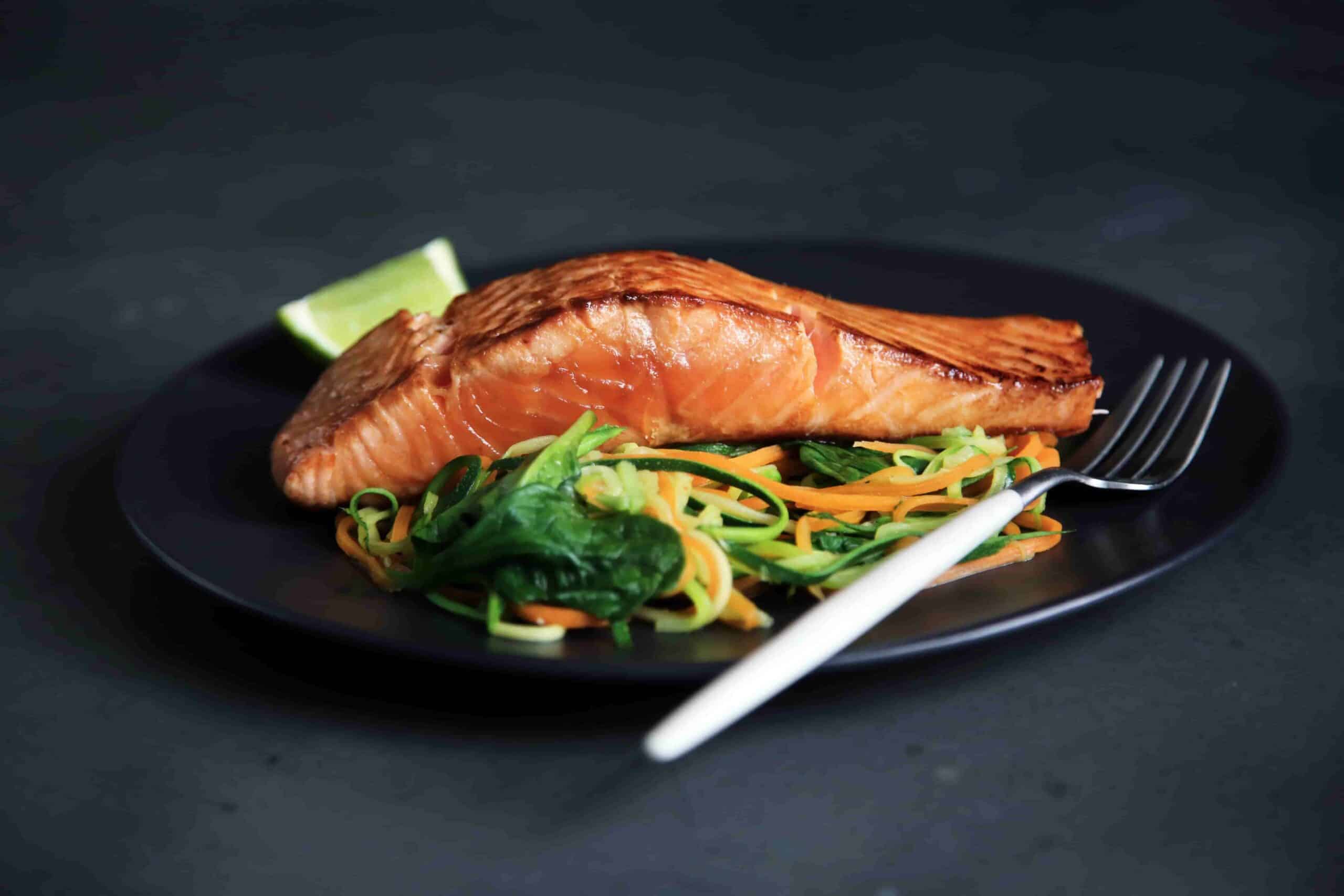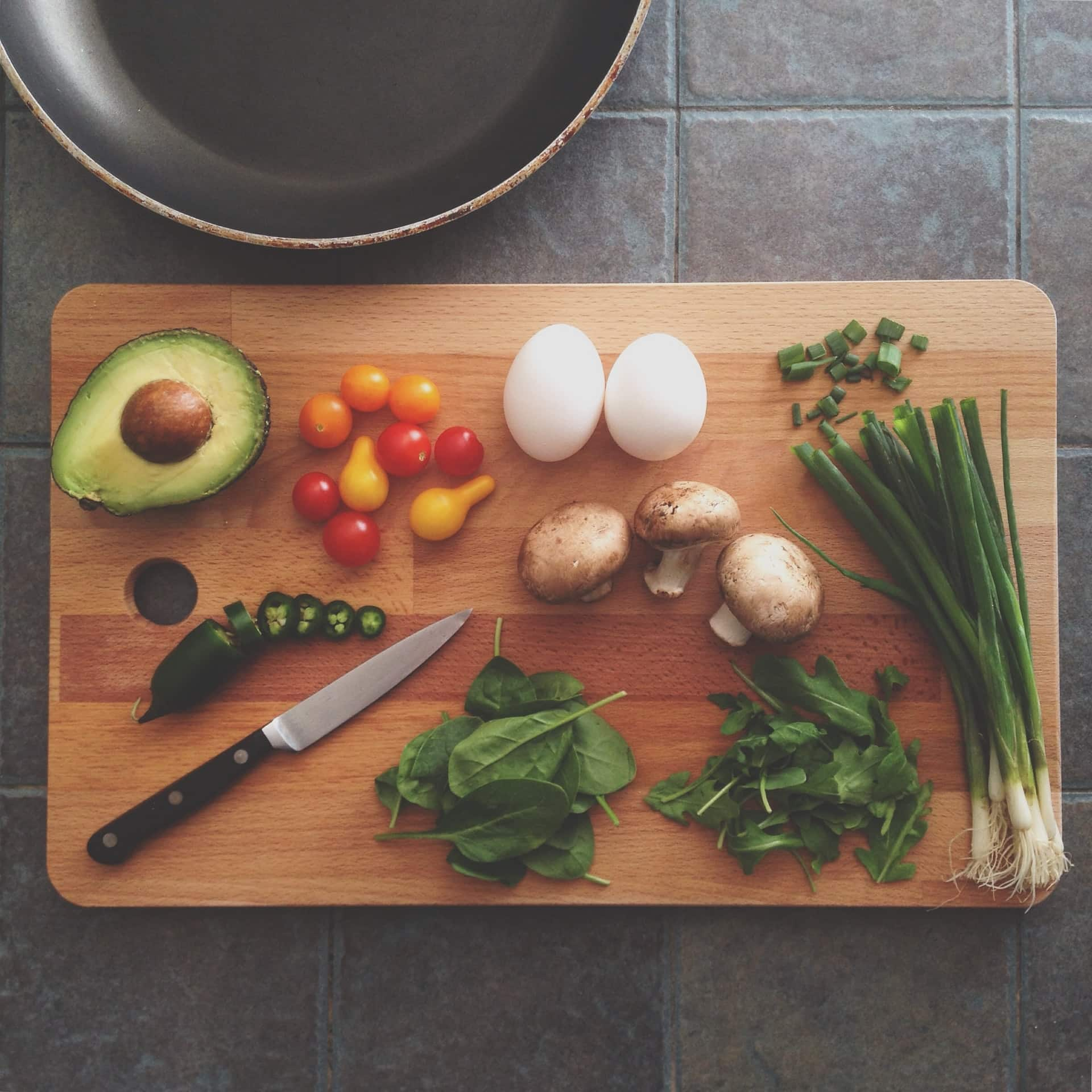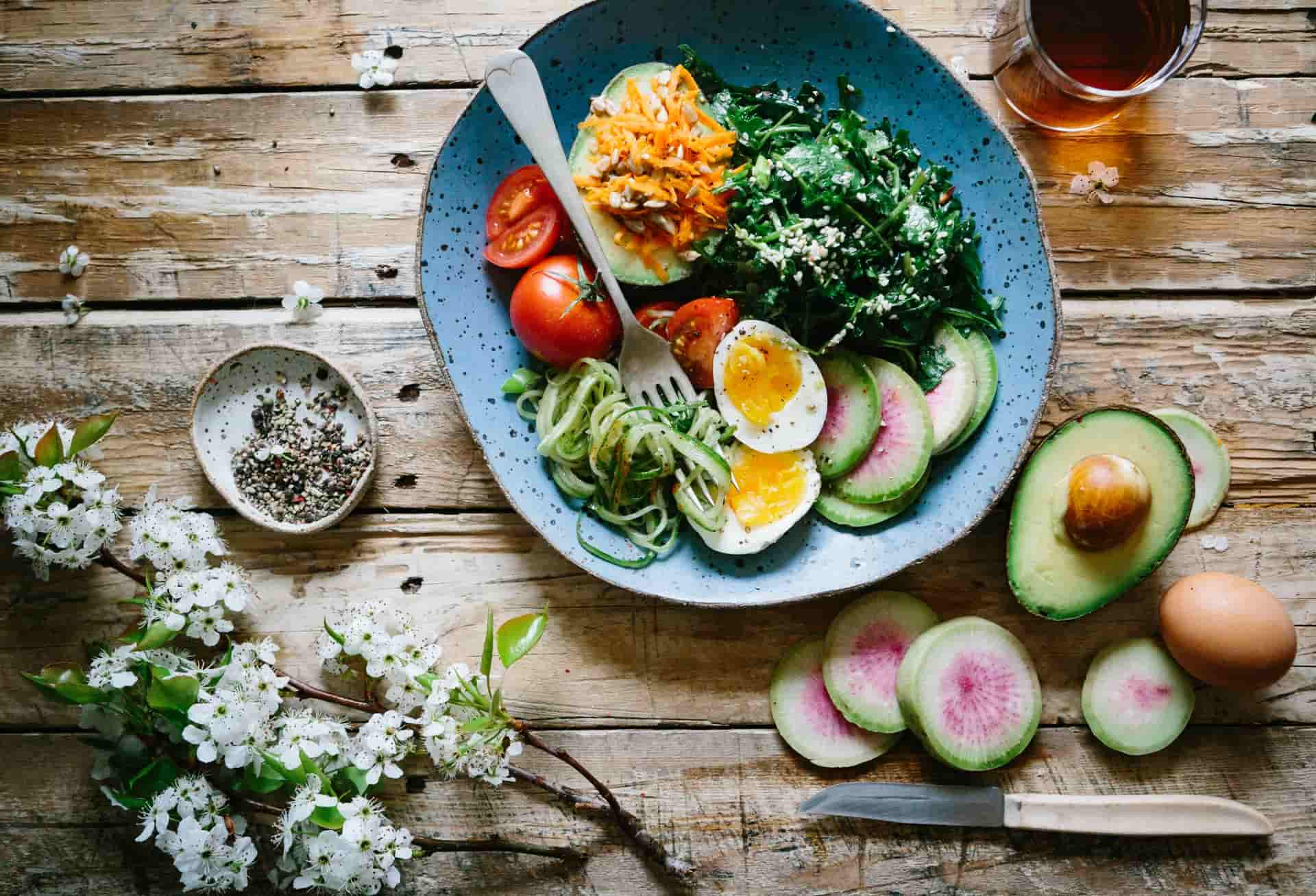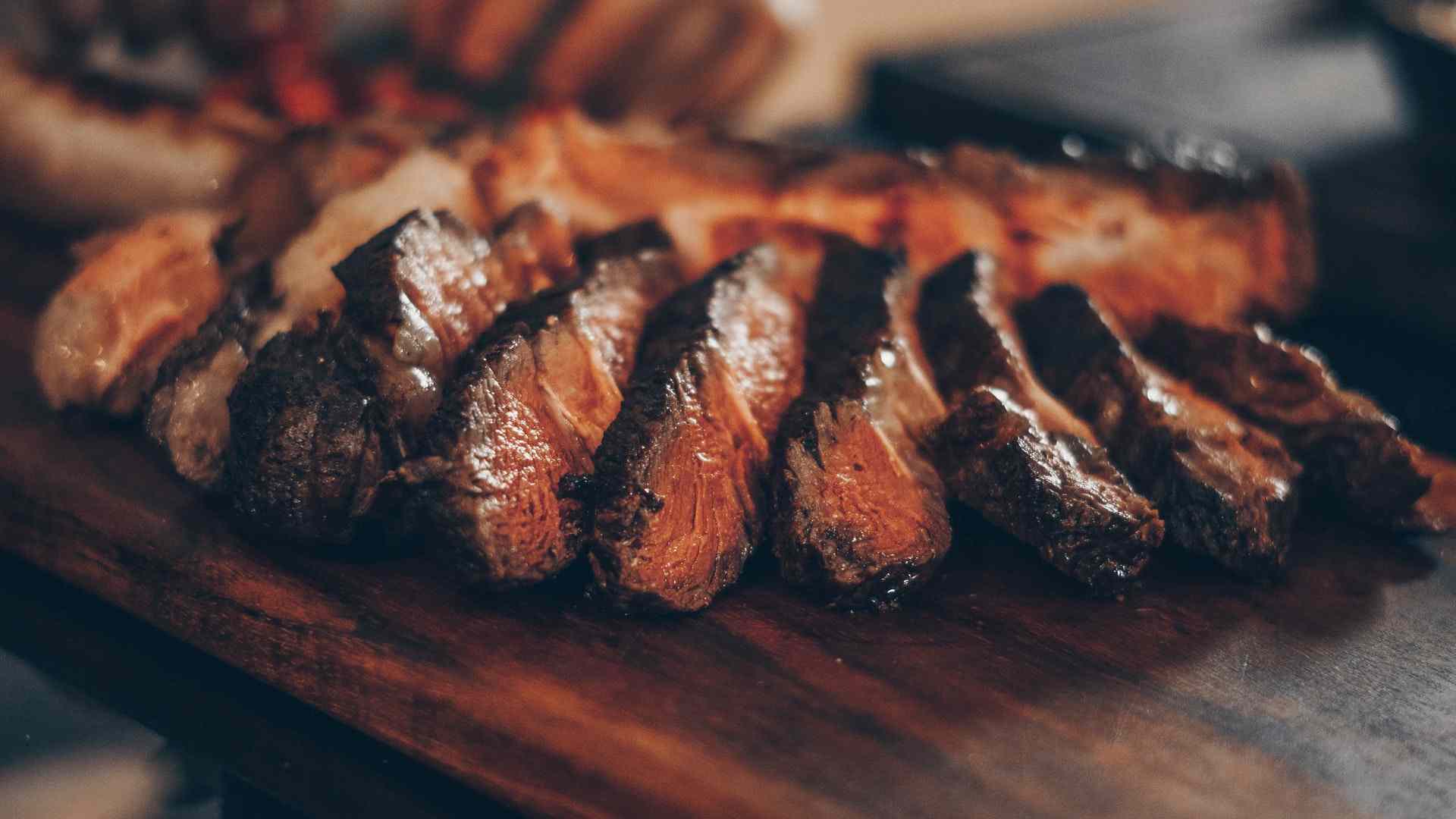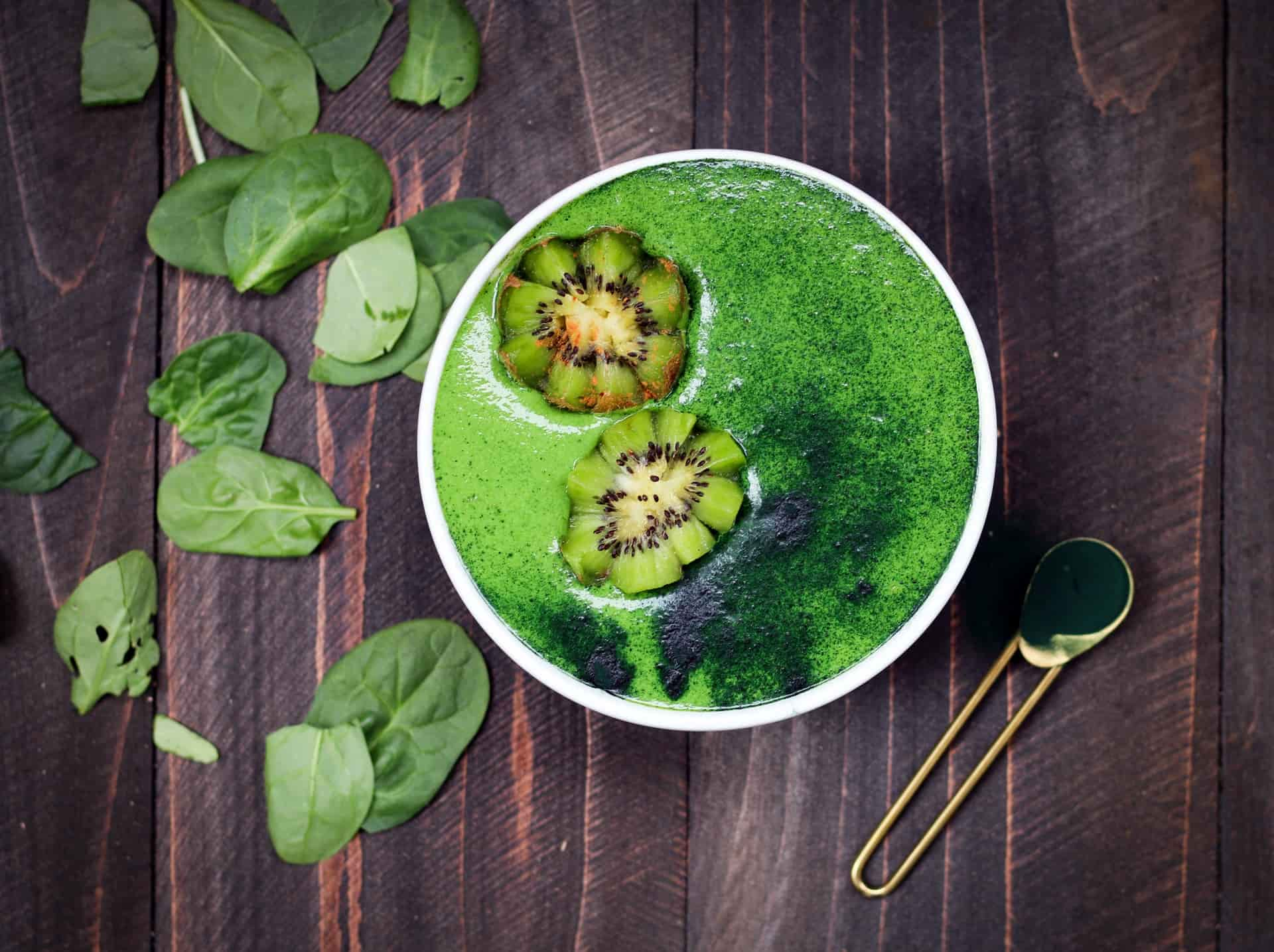Paleo Meal Plans
Developed by the #1 Meal Planning App
Weekly meal plans for the paleo diet with custom shopping lists and recipes.
Table of contents
Customize Your Paleo Meal Plans
The paleo diet is a way of eating that harkens back to our ancestors. While we’re not eating exactly what our ancestors ate thousands of years ago, the premise is to eat a diet composed of real, whole foods. Food as nature intended it to be – before farming came into the picture.
Why You Should Meal Plan the Paleo Way
When following the paleo diet, there is no calorie counting required. There is no need to track your carb intake. There’s no weighing or measuring your food. All you have to do is stick to paleo-friendly foods. If it’s paleo, you can eat it. It’s a really great opportunity to tune back into your body – eat when you feel hungry and stop when you feel satisfied. Skip the junk and focus on foods that support your health.
Paleo foods are those that are inherently nourishing to your body. In a very basic sense, a well-balanced paleo diet includes eating high-quality protein, vegetables, starches, fruit, nuts, seeds and healthy fats. If it sounds simple, it’s because it is! You can eat any amount and combination of these foods that you see fit for your own body and lifestyle.
The foods that aren’t paleo-friendly are foods that have been commonly known to cause health issues or be irritating to the skin, gut or overall health. This includes dairy, gluten, sugar, legumes, unhealthy fats, processed foods. You know the foods that make up the standard American diet…the candy, soda, junk food, fast food, alcohol, etc. Those are the ones that you want to avoid.
Why You Need a Plan for your Paleo Diet
One of the hardest things to do when trying out a new diet is sticking to it. It can be confusing to both learn about the new parameters of a diet and what is allowed and not allowed – all while learning to cook new foods.
Meal plans help take the guesswork out of transitioning to a new diet and way of life and makes it easy for you to stick to the diet – instead of always wondering if you’re sticking to it or not.
A meal plan gives you a plan, a schedule, recipes, and a shopping list to start the week – so you don’t have to do the leg work during the week – increasing the likelihood that you’ll stick to your diet.
Of course, you can learn to meal plan on your own, or you can use a tool like ours to help make it as easy as possible.
What To Eat on a Paleo Meal Plan
The most important thing when eating paleo is that – you actually eat paleo. Sometimes called the caveman diet – the easy way to filter this in your mind is to ask yourself “could a caveman eat it?” If os, you’re probably in the clear.
Foods you can eat on a Paleo plan
If you’re going to eat according to a paleo template – you should mainly focus on the following foods:
- High-quality protein
- Fish
- Seafood
- Eggs
- Vegetables
- Some fruit
- Nuts and seeds
- Natural oils
Foods to avoid on a Paleo plan
Meanwhile, you’ll want to avoid the following foods:
- Grains
- Dairy
- Legumes
- Sugar
- Processed foods
- Alcohol
If you’d like to see a full detailed list of foods on the paleo diet -checkout this comprehensive list or download the paleo.io food list app.
Sample 7 Day Meal Plan with Recipes
Down below, you’ll find an example meal plan and meal plan recipes
Monday
Breakfast: Winter Fruit Salad
Lunch: Loaded Sweet Potato Fries
Dinner: Beef Stir Fry
Snack: Tuna Avocado Salad
Tuesday
Breakfast: California Omlette
Lunch: Stuffed Chicken Breasts
Dinner: Beef Stuffed Peppers
Snack: Epic Bar
Wednesday
Breakfast: Salmon Omlette with Guac
Lunch: Turkey Avocado Boat
Dinner: Salmon Salad w/ Winter Fruit
Snack: Sliced bell pepper + avocado
Thursday
Breakfast: Open faced omlette
Lunch: Seedless watermelon salmon salad
Dinner: Spinach & Steak salad
Snack: Walnuts
Friday
Breakfast: Apple Rawnola
Lunch: Steak & Egg
Dinner: Salmon Stuffed Tomatoes
Snack: RX Bar
Saturday
Breakfast: 7 Minute Egg 7 Bacon
Lunch: Turkey Veggie Stir Fry
Dinner: No Bean chili
Snack: Apple
Sunday
Breakfast: Almond blueberry parfait
Lunch: Turkey roll ups
Dinner: Bacon wrapped dates
Snack: Dried fruit + walnuts
Weekly Paleo Menu with Photos
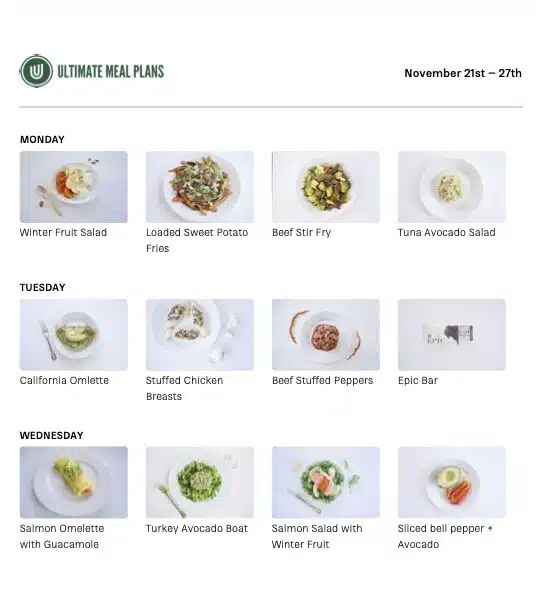
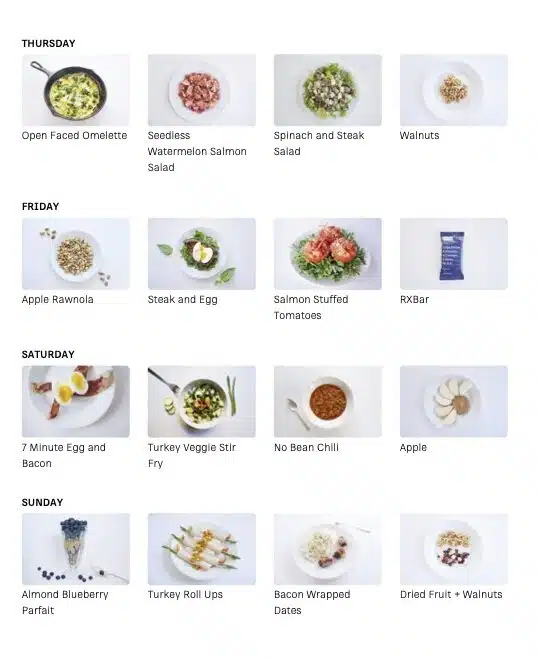
Frequently Asked Questions about Paleo Meal Plans
As the #1 meal planner app on the internet, we plan thousands of weekly meal plans every week and we get a lot of questions. Here are some of the most common paleo questions we get:
Is paleo unhealthy?
No! This is a common question, but fortunately the paleo diet is actually quite healthy! Like any diet – you can take it to the extremes and it can become unhealthy, but by and large – paleo can help you get back in touch with eating real, whole, nutritious food.
What is a typical paleo meal?
While every meal is different, a typical paleo meal contains a high quality protein, some vegetables, and a little bit of low glycemic fruit (berries) on the side.
Can you lose weight eating paleo?
Yes, most people choose paleo to lose weight. The great thing about the paleo diet is that it helps you focus on eating real foods – which are more satiating than highly processed foods stuffed with sugars.
Can you drink coffee on paleo?
Yes, fortunately coffee is very paleo and you can still get your caffeine fix while eating like a caveman.
Can you eat rice, potatoes, or (this food) on paleo?
Rice is generally considered not paleo, but okay in small amounts. Same with potatoes. If you’d like a definitive list of foods that are or are not paleo, check out this list or download the paleo.io app for iOS and Android.
How can I get started with paleo meal plans?
You can get started with paleo by trying one of our meal plans free for 14 days. Start your paleo meal plan trial free here.
The best paleo meal plan resources
People are always looking for more information on the Paleo diet. Unfortunately, though, there are unhelpful and frankly unscientific resources out there, that’s why we’ve come together to collect the best resources we can find.
Read more below:
- Robb Wolf – Rob is the author of the book, The Paleo Solution. As a former research biochemist as well as podcast host Robb’s site is full of useful information on Paleo.
- Mark Sisson – Mark is in many ways the founder of the modern Paleo community, with a focus on primal life and not just diet, Mark’s site is full of good information.
- ‘Intermittent fasting, Paleolithic, or Mediterranean diets in the real world’, American Journal of Clinical Nutrition – This study out of New Zealand looks at the effects of Paleo, Intermittent Fasting and Mediterranean diets on a group of overweight volunteers, the paper provides a balanced but detailed investigation for those interested in diving deeper.
- Marked improvement in carbohydrate and lipid metabolism in diabetic Australian aborigines after temporary reversion to traditional lifestyle’ – In this classic study from the 1980s Dr Kieran O’Dea showed that 7 weeks of living a primal lifestyle improved metabolic markers of Australians who had been diagnosed with type 2 diabetes.
- This study from the Medical Journal of Australia explores the effects of the Paleo diet on type 2 diabetes, with positive results, though it does caution that more research is required to come to full conclusions.
- Paleodiet.org – this site is a simple and trustworthy guide to all things paleo.
- The IMPOSSIBLE Guide to the paleo diet.
- The Ultimate Beginner’s Guide to paleo by UPG
Paleo Meal Plans Pricing

Monthly
- Weekly meal plans
- 15 min / 5 ingredient recipes
- Grocery Shopping List
- Private Facebook Community
- 24/7 Paleo Coach Access
- Money Back Guarantee
$15 per month
14
per month
Quarterly
Save 20% off our monthly pricing
- Weekly meal plans
- 15 min / 5 ingredient recipes
- Grocery Shopping List
- Private Facebook Community
- 24/7 Paleo Coach Access
- Money Back Guarantee
$16 per month
12
per month $36 per quarter
Yearly
Save 25% off our monthly pricing
- Weekly meal plans
- 15 min / 5 ingredient recipes
- Grocery Shopping List
- Private Facebook Community
- 24/7 Paleo Coach Access
- Money Back Guarantee
$15 per month
8
per month $96 per quarter

Money Back Guarantee
Customize your first meal plan risk-free. if you don't love it within the first 30 days - you get your money back. Simple.
If you're not sold on this diet, here are other similar plans you might like
See all of our diet meal plans options here.

